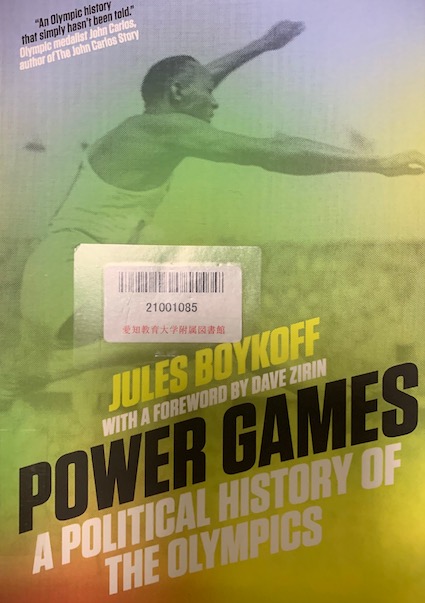
A very timely book, considering the current
Tokyo Olympics and Paralympics,
which I read in July 2021.
The writer, Jules Boykoff, now a professor, is by no means
anti-sport. He was
a former US Olympic team member. However, he shows how the
Olympics
has steadily developed into the 'juggernaut' it is now.
Key to the development were powerful key figures starting with
Pierre de Coubertin,
who was the founder of the revival of the Olympics from their
roots in Ancient Greece
and whose aristocratic status was typical of many who were
involved in the early days
and until now, to some extent.
Then, the American, Avery Brundage, President of the International
Olympic Committee
for twenty years. He was described by David Miller, in 'The
Official History of the
Olympic Games' as, "despotic, a moral bulldozer, fanatical
defender of de
Coubertin's
legacy." As head of the American Olympics Committee at the time
of the 1936 Berlin
Olympics, he had controversially rejected evidence of
persecution of Jews by the Nazis.
A later I.O.C. President, Juan Samaranch, was controversial,
too, with his support for
the Spanish Fascist leader, General Franco.
Although both de Coubertin and Brundage strongly supported the
amateur ideal, after
their time, professionalism developed and with escalating costs
for the Olympics, the
increasing role of sponsorship, especially from the 1996 Atlanta
Games onwards.
In spite of the the huge costs involved in holding the Olympics
and the debt that cities
are saddled with, cities have continued to compete to hold them,
leading to bribery
and corruption. That was particularly an issue at the 2002
Winter Olympics in
Salt Lake City, with 'gifts' including college scholarships and
even a $524 dollars'
violin! Apart from costs, there have been a succession of
'challenges', both positive
and negative, particularly concerning various kinds of protests.
Local people, particularly
the poor, have often suffered as city funds were diverted to pay
for the Games and housing
and other facilities were removed to make way for them. That was
particularly the issue
at the 2016 Rio Games. Protests against the games have often
been suppressed, again
particularly at Rio and now in Tokyo. Other key protests have
been by Tommie Smith
and John Carlos, at the 1968 Mexico Games, challenging racism as
well as Taiwanese
athletes protesting at the 1960 Rome Olympics, as Taiwan's
involvement was increasingly
challenged by China's developing role in the Games.
The book is also interesting in showing how the elements of the
Olympics have built up
over time, including the torch relay which was instituted at the
1936 Berlin Games.
The question is: How long can the Olympics continue in their
present form? In particular,
the overlarge size and scale, termed 'gigantism'? Boykoff, the
writer, has been involved
in suggestions on reform, but vested interests appear to stand
in the way.
See the previous book
which I wrote about.
Back to the
start.
